
Castle Renovation: How to Live in a Modern Fairy Tale
March 11, 2025
What was staring Harvey B-Brown and his husband, Steve Riseley, in the face was a graffiti-covered shell that had been abandoned for nearly a century. Built in the late 1800s, Castle Elvira in Puglia, Italy, had been given as a birthday present to a 17-year-old called Elvira. To thank her parents for her gift, the teenager prepared a feast using mushrooms she’d picked in the grounds. She died that night after eating one that was poisonous. Her grief-stricken parents sealed up the castle and left Puglia forever.
Italian Beauty
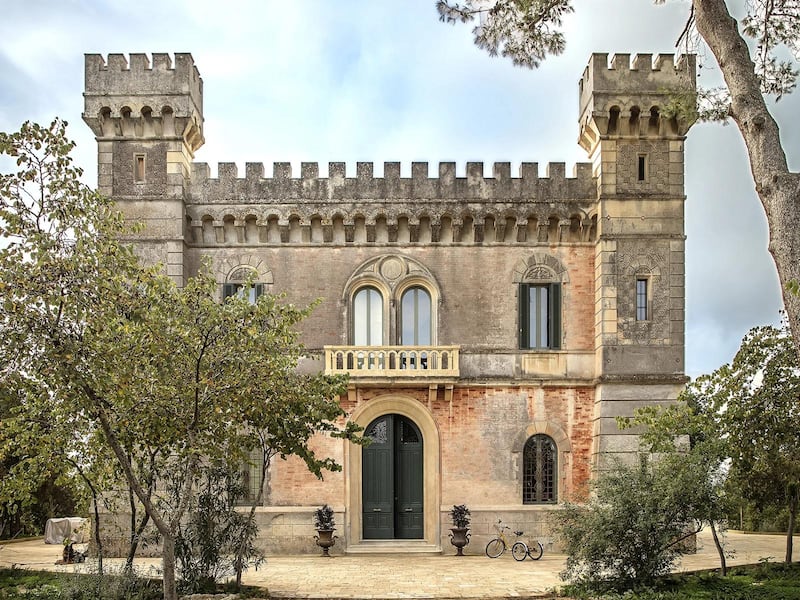
“We fell in love with it the second we saw it,” says B-Brown. “Or rather we fell in love with our vision of what it could be. Sometimes what you see in your mind’s eye is not what’s staring you in the face.”
We fell in love with it the second we saw it. Or rather we fell in love with our vision of what it could be. Sometimes what you see in your mind’s eye is not what’s staring you in the face—Harvey B-Brown of Castle Elvira
“When we went to view it in 2018,” says Riseley, “we had to hack a path through 37 acres (15 ha) of wilderness and inside was a scene of total dereliction.”
Elvira’s interiors—its frescoed ceilings, cast-iron filigree window grates, parquet floors—had been looted, vandalized, or ravaged by the elements. The stairs had rotted away. Winds howled through its pane-less windows; birds nested in its pink turrets.
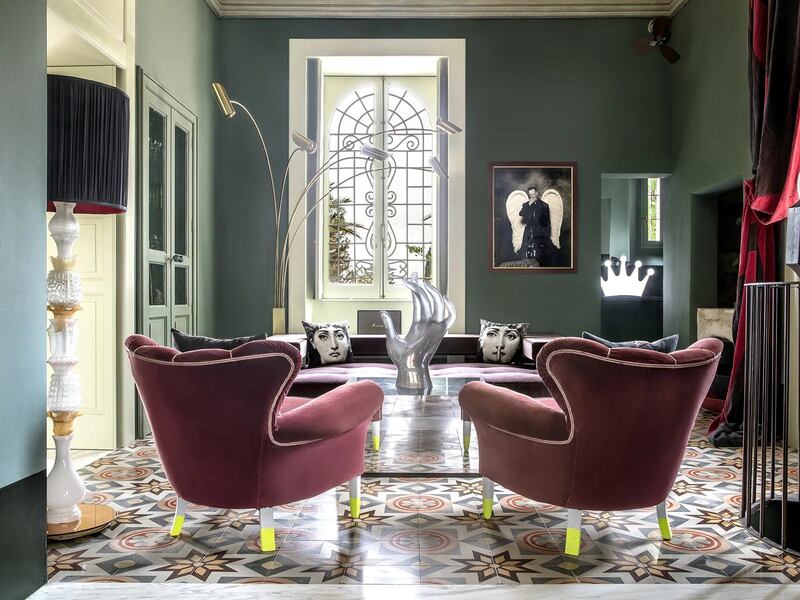
Turning the castle into a residence and hotel was a far bigger undertaking than the couple had anticipated. “We were bewitched by Elvira, obsessed, blinded by love—and our decisions were driven by the desire to recapture and honor its intrinsic character,” says B-Brown.
“We wanted to preserve what was there, such as the murals on the ceilings, and to restore what we could salvage or, if we couldn’t do that, to find craftsmen who could build traditional stone walls, work iron, and make banisters and stairs from bare wood, which proved a painful process.
“We were swept up by the dream, but when reality bit, it bit hard—the sheer scale of what we had to do caused many sleepless nights.
Related: View 8 Castles That Blend the Medieval with the Modern
“Castle renovation is not for the faint hearted. It takes stamina, tenacity, and huge emotional and financial resources. It takes imagination—how are you going to install heating and air conditioning and all the necessities and luxuries of 21st-century living in a 19th-century building without disrupting its appearance?
“Our smart televisions are integrated into retro-style mirrors and we used the most advanced under-floor heating and air cooling system. And then there are the regulations and the red tape, and the fact that different restrictions can apply to different parts of the estate, depending on its age.
“But when we see how much our guests love Elvira, we’re so glad we didn’t take any short cuts.”
castleelvira.com
Into Tomorrow

“Good castle renovation is about preserving the property’s ancient soul while giving it new life as a luxurious family residence. Baronial architecture demands opulence, a home demands comfort. The key is to balance the two,” says Katharine Pooley, founder of Katharine Pooley Design Studio, who did the interiors for Forter Castle, her family’s 16th-century property in Perthshire, Scotland.
Baronial architecture demands opulence, a home demands comfort. The key is balance—Katharine Pooley
“People who buy a castle—my father, Robert Pooley, included—are drawn to the history, to the fact that they are preserving something unique for the future. When my father acquired Forter in 1988, it was a roofless ruin.
“It could easily have been lost, but he transformed it into one of the great houses of Perthshire. It is his legacy, and now an important part of my family’s narrative: taking on the interior design was a deeply personal project for me.
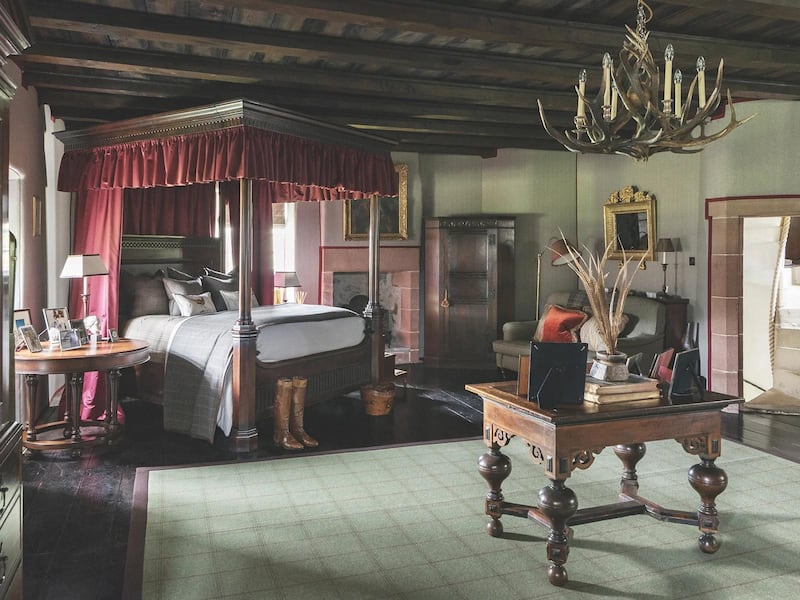
“My foundational points were the building and its proportions, and the landscape. You have to give a property of this size—with its high roofs—grandeur. You layer, adding color and texture and light to create a space for entertaining, or relaxing, or partying.
“The Great Hall is still what it was all those centuries ago—a place for banquets. We wanted to make its Great Hall one of the main attractions, so we commissioned the artist Jennifer Merredew to paint a spectacular mural across the timbers.
“To undertake a castle renovation, you need talented craftspeople who share your vision. That’s the best route to getting the results that you desire.”
katharinepooley.com
Stage Struck
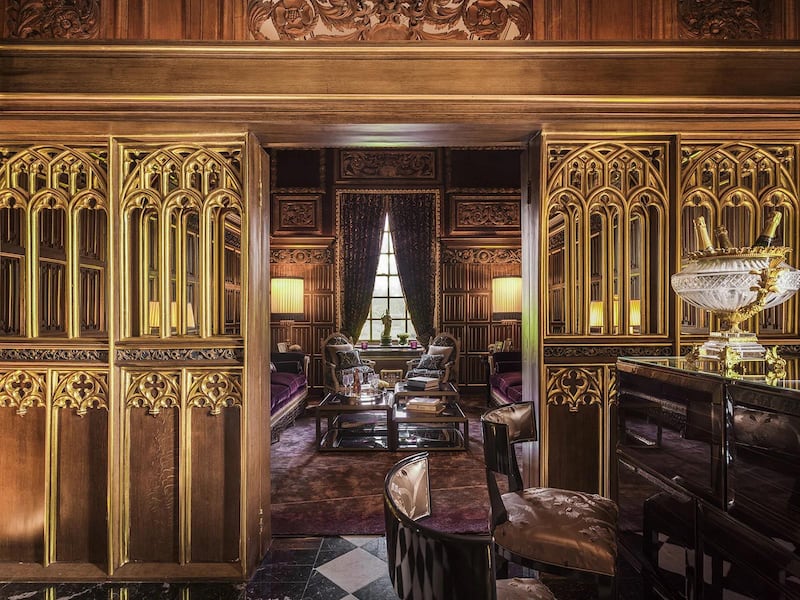
Award-winning architect and interior artist Alex Kravetz has transformed many historically important properties into exquisite residences. A non-disclosure agreement means he cannot name the castle renovation he oversaw for a client, nor even give its location, but he says that when he found out his proposals had been accepted, his “heart leapt both with excitement and trepidation.”
“A castle provides the perfect stage for drama, which means there is scope to let the imagination run wild. To an extent it’s a theatrical experience. It’s the design and architecture team’s job to fulfill as many of the clients’ fantasies as possible, but also to advise what heritage and conservation bodies will allow.
“You need to be forensic in your research. Delving deep into the archives, or finding a scrap of newspaper that proves that modifications occurred much later than believed can make the difference between getting your plans approved or not.
Related: Take a Tour of this Renovated 15th-Century French Castle
“Research is also at the heart of finding people with the necessary skills to recreate the past. Depending on where the castle is, you might well need to bring in people from other countries. If you want the best, you will have to wait for them, so build this into your time frame.
“Integrating and sometimes concealing modern living—heating systems, lifts, and ramps—into the fabric of an ancient building is technically difficult. You choreograph, you set-build: where can the full-screen cinema room go, or the bowling alley?
“It’s your job to make all this happen while ensuring you never lose sight of the property’s heritage.”
alexkravetzdesign.com
Military Minded
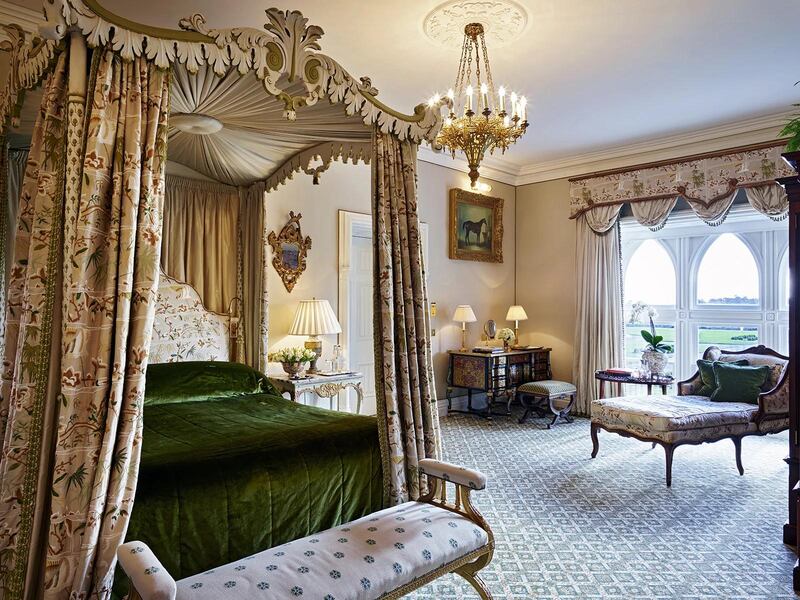
Now part of Red Carnation Hotels, Ashford Castle in County Mayo, Ireland, has been a part of its community for more than eight centuries. The castle renovation, says Jonathan Raggett, CEO, Red Carnation Hotels, “left no tile, window, or brick untouched.”
When he first visited, there was a gale blowing through it. “I thought, ‘How on earth are we going to keep the weather out? How are we going to make this a cozy and inviting place to stay?’”
Raggett says the project was managed like a military operation. “We had strategies, phases of what had to happen when. The infrastructure had to be overhauled completely—800 windows were replaced, as were 10,764 square feet (1,000 sq m) of lead roofing, with each tile being cut by hand."
Related: Discover 6 Charming Castles & Grand Estates
Toni Tollman, the director of design and projects, had teams of people sourcing materials and artifacts from all over the world. The marble in the Prince of Wales Bar and in many of the bathrooms is from Connemara, the double-tiered Val Saint Lambert chandelier in the Great Hall is from Belgium. Tollman hired furniture makers and restorers who salvaged, mended, and recreated.
They even found a way of strengthening the original Oak Hall gallery, which had been thought too unstable to keep, so that it could remain in use.
“The transformation of the castle has been so amazing that sometimes when I visit, I think, ‘Was it really in as ruinous a state as I remember?’” says Raggett. “I check the photos and I think, ‘Oh my goodness, it was even worse…’”
ashfordcastle.com
Banner image: Ashford Castle in County Mayo, Ireland. The Red Carnation Hotel Collection
Find your fairytale by exploring available castles featured in our current magazine issue, or discover more castle-themed content here.


